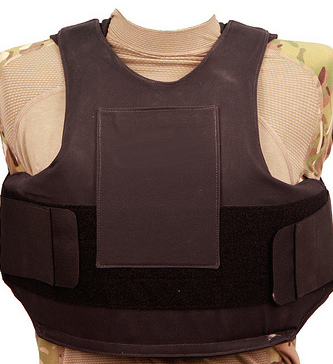Bulletproof Vests: A Beginner’s Guide
Bulletproof vests are part of every survivalist’s supplies list. They protect the torso from firearm projectiles and from shrapnel from explosions. A lot of people have the mistaken assumption that only law enforcement can have body armor, and that it is illegal for ordinary civilians to purchase it. Fortunately, that is incorrect. This article walks you through some of the basic things to consider when searching for the right bulletproof vest.
NOTE: Getting shot, even while wearing a bulletproof vest is extremely dangerous. You should NEVER test a bulletproof vest while wearing it. It is a last resort life-saving precaution. Also note that getting shot while wearing a bulletproof vest hurts REALLY REALLY bad and you can still sustain injuries such as broken ribs or other blunt force trauma related injuries.
“Family of Concealable Body Armor (FoCBA)” © 2011 by PEOSoldier, used under a Creative Commons Attribution license: http://creativecommons.org/licenses/by/2.0/deed.en
Hard vs. Soft Body Armor
Hard body armor equipment uses plates of metal or ceramic material. These types of body armor are typically worn by SWAT personnel and combat soldiers. In general, they can stop anything up to a rifle bullet or shotgun slug. Soft body armor utilizes several layers of certain types of fabrics. These types of vests are generally worn by police officers, bodyguards and security guards. Soft body armor can generally stop bullets from the average handgun and also from shotgun pellets.
Levels of Protection
There are different levels of protection that bulletproof vests offer. “Bulletproof” is a little bit of a misnomer because it implies that the vest can stop all bullets all of the time. Some of the lower level vests are better classified as “bullet resistant.”
The rating system is related to the amount of blunt force impact the body armor is capable of stopping. Here are the levels of protection from lowest to highest. The statements regarding stopping power of course depend on how far away the shooter is and what the velocity of the projectile is. In general, the following is accurate:
- Level I – This level is actually no longer part of the standard system. It was generally good for protection against .22 Long Rifle Lead Round Nose bullets.
- Level II-A – Good for protection against 9mm, .40 S&W, and .45 ACP. This level can be worn under clothing for long durations. It is soft and thin (4mm thick), so you don’t loose much in the way of mobility while wearing it.
- Level II – This level of bulletproof vest is about 5mm thick. These are typically worn by patrol officers. Protects against .357 Magnum and generally the same as Level II-A but good for slightly higher velocity projectiles.
- Level III-A – Can protect against .357 SIG, .44 Magnum. 8 to 10 mm thick. Generally good against rapid-fire attacks (9-mm submachine gun).
- Level III – Incorporates armor plates. Good against 7.62x51mm NATO M80 ball. .5 to ¾ inches thick over the chest and back. Not concealable. Generally worn over the clothes. Harder to move in.
- Level IV – Good for protection against .30-06 Springfield M2 armor-piercing rounds. Same as level III as far as mobility and visibility.
- Stab-Resistant Vests – Armor plates similar to Level 3 and 4. Typically worn by prison guards. Rated Levels 1 – 3 based on the stab pressure they can withstand.
Concealed vs. Visible
As you can probably tell from the information presented so far, if the bulletproof vest is more concealable, that generally means less protection. Vests worn under clothing are usually white so that they look like an ordinary undershirt. Having a concealable vest is important if you don’t want anyone to know you are wearing one. Depending on the situation, you may not care if your bulletproof vest is concealed. Generally, keep in mind that the higher the level, the less mobility and the more fatigued you will get moving around.
Size
Make sure the vest fits you. If it doesn’t, your safety may be compromised. Vital organs may be exposed when a bulletproof vest is too loose or even too tight.
This article was meant to introduce you to the basic considerations for bulletproof vests. There is much more to learn. For more information, I suggest you check out the following links:
http://en.wikipedia.org/wiki/Bulletproof_vest#Performance_standards
http://www.wikihow.com/Buy-a-Bulletproof-Vest
Here is a great video demonstration as well:
If you are ready to purchase a bulletproof vest, I suggest you check out the products offered by CHIEF SUPPLY, particularly, the
Survival Armor Peacekeeper Armor Package, Spike 1 (Spec Color). It is a good starting point for a Level II or IIIA bulletproof vest.




